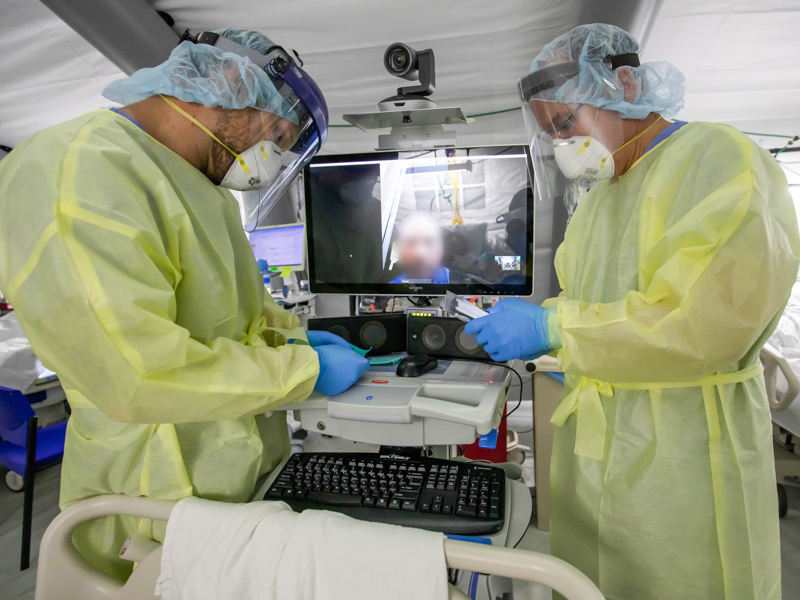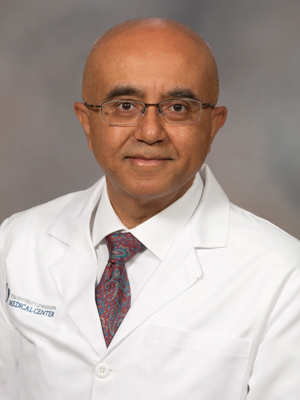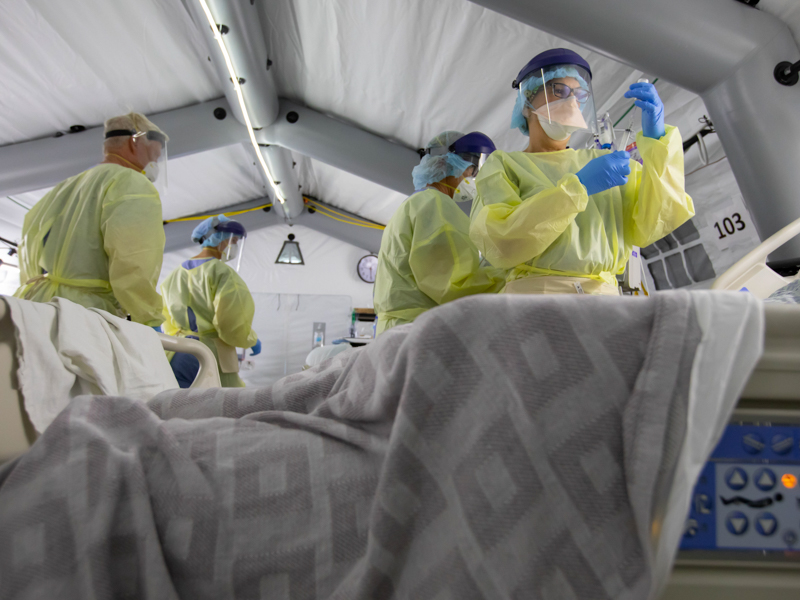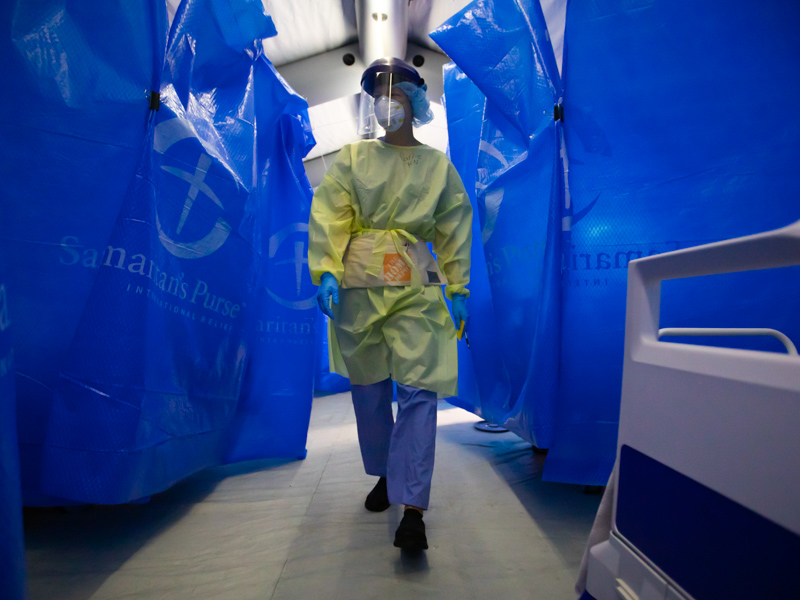Telehealth connects families, ICU patients in Samaritan’s Purse field hospital

A 48-year-old man gave COVID-19 a good fight from his intensive care bed, one of seven at the Samaritan’s Purse field hospital on the University of Mississippi Medical Center campus.
A ventilator is breathing for the Jackson metro-area resident. All seven ICU patients are on life support. Their families would love to visit them in Parking Garage C, home to the fully equipped field hospital, but that’s not how it works with patients so highly contagious and critically ill.
Even so, this man’s family got to see him that day, by his bedside, perhaps a foot or two separating their faces. His loved ones were standing outside their home, but UMMC’s Center for Telehealth connected them via live video.

“We provide the tools for visitation,” Dr. Saurabh Chandra, a critical care physician and the Center’s executive director, said of carts bearing monitors that can be rolled from patient to patient. “The software on the cart enables you to send a link to outside family members, and also to UMMC physicians who can consult with the patients.”
When family members get to see their loved one in the field hospital, it can allay fears they have about an unconventional space for an intensive care unit. Samaritan’s Purse, an international Christian organization that provides medical aid to people and areas in need, set up a 32-bed field hospital solely for COVID-19 patients on August 18 in the garage next to the Kathy and Joe Sanderson Tower of Children’s of Mississippi.
They’re providing much-appreciated, hands-on and expert care to help UMMC cope with its daily crush of patients, many of them in need of ICU ventilation.
The Samaritan’s Purse health care team recently increased the number of ICU beds in the field hospital from five to seven to meet UMMC’s growing needs, said Peter Holz, a registered nurse and Samaritan’s Purse assistant medical director for the field hospital.
“If you hear that your family member is in a field hospital in a garage, you might wonder what kind of care they’re getting,” Chandra said.
“One of the biggest challenges we’ve had with the virus is that lack of visitation. You’re not able to see your family, and they can’t see you. You are lonely. You are scared. You want that connection.”

“The family lights up when they finally get to see their family member,” Holz said. “They often call other members of the family over to look.
“It’s been a great way for us to connect family members with the patients. We get lots of repeat requests to do it again.”
Dr. Alan Jones, UMMC’s associate vice chancellor for clinical affairs and COVID-19 clinical response leader, asked the Center to step up. Chandra on August 15 activated telehealth team members including Greg Hall, the Center’s director of telehealth IT, and Christina Wright, project manager in operations management.
It was a Sunday evening; Chandra wanted the service available when the field hospital opened in three days so that families and patients could have the emotional connection and lifeline that telehealth provides.
“Dr. Chandra said, ‘How fast can we get this set up?’” Hall said. The urgency was not just for family members to connect with patients, but for UMMC specialists to assist in treatment. Telehealth is much quicker than a 10-minute walk across campus to Garage C and eliminates the need for a UMMC provider to don full PPE.
“We said, ‘Let’s put the technology in place so that if a patient needs a nephrology consult, the nephrologist can take that call from wherever they are. Let’s allow the Samaritan’s Purse workers to dial those patients’ homes so that they can talk to a family member,’” Hall said.
The way it works: The bedside caregiver can email or text the family member a link to click so that they can join the video visit. “So long as they have a camera on their cell phone or on their computer, they can talk to their family member,” Hall said.
The family member’s face appears on the telehealth cart’s monitor, where they can be seen by caregivers and patients. If the patient is sedated, the family can still see them and their surroundings, and talk to their medical team.

“We are here 24 hours a day, so we try to meet what time periods work for families that would like to visit,” Holz said. “To tell someone that their family member is intubated is far different than being able to visit them. Painting a picture with words is not as effective as visually seeing them.”
The telehealth carts can be a better option than a patient or nurse using a cell phone for a FaceTime visit, Wright said. “Some patients don’t have a cell, or they’re incapacitated or about to be intubated,” she said. Others are too sick to press the numbers on a phone, but can still enjoy a visit, Holz said.
The visits are one more way the Center for Telehealth addresses the emotional health needs of not just patients, but their families. The close working relationship with Samaritan’s Purse is key to adding that element of care.
The Center is one of the nation’s two federally designated Telehealth Centers of Excellence. In June 2020, the Federal Communications Commission awarded UMMC’s telehealth program a $1 million grant to expand services to meet the changing needs of patients during the pandemic.
“When we are asked to put together a solution in a day, and have it up and running by that Wednesday, it’s a challenge, but it’s worth it,” Hall said. “If I see a patient on a vent and know they are alone and can’t see their family, the first thing I think is: How can I connect them to their family?”
The Center is working toward a similar arrangement for patients in UMMC’s intensive care units located in the Conerly Critical Care Tower.
‘By far, this has been the most impactful project I’ve done here,” Wright said. “It happened super fast. We’re the fixers. How can we make this a better experience? That’s in our nature.
“It’s inspiring to see this come together, and to see people working together so well.”


